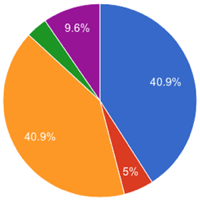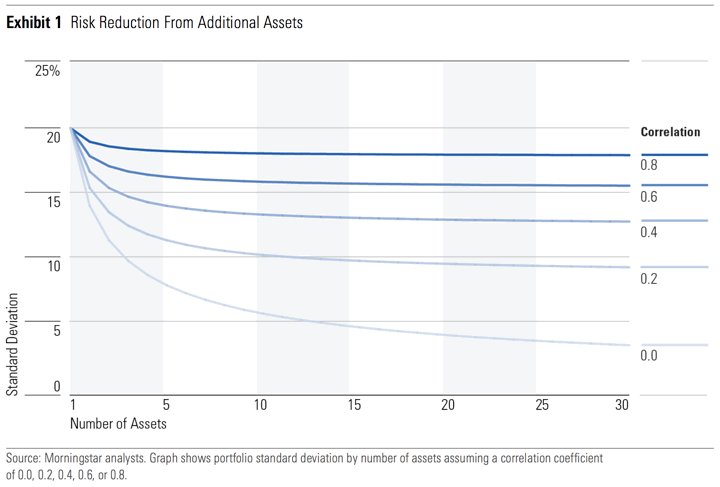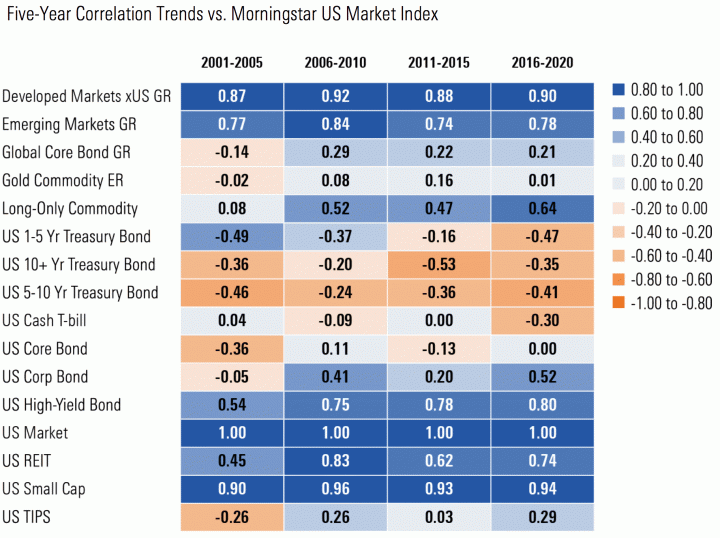 When talking about constructing an investment portfolio, you’ll often hear about diversification and buying low-correlation or non-correlated assets.
When talking about constructing an investment portfolio, you’ll often hear about diversification and buying low-correlation or non-correlated assets.
- A positive correlation means that the assets tended to move in the same direction. A value of 1 is perfect positive correlation.
- A negative correlation means that they tended to move in opposite directions. A value of -1 is perfect negative correlation.
- A zero correlation means that they had no relationship.
Morningstar recently released its 2021 Diversification Landscape Report (free download with e-mail) which includes a lot of great information about the correlations between key asset classes from 2001-2020, including the March 2020 COVID-related market crash. I try not to look too finely at historical numbers, but noticing the overall historical trends can be helpful.
The lower the correlation between asset classes (the less they move in the same direction), the greater the reduction in volatility you get by combining assets. As long as you combine asset classes with correlations below 1, you get some degree of volatility reduction. This M* chart from the paper helps you visualize this:

This handy M* table shows how the 5-year correlations between the total US stock market and other major asset classes have changed over the four separate periods of 2001-2005, 2006-2010, 2011-2015, and 2016-2020:
Some quick takeaways:
- The best portfolio diversifiers for US stocks has consistently been US Treasury bonds. Short-term, medium-term, long-term Treasuries all have consistently negative correlations to US stocks. (There is some problem with the shading in the chart that doesn’t quite match the numbers.)
- International developed country stocks, Emerging Markets stocks, and US REITs have high correlations with US stocks (which is somewhat expected), but the correlation is still below 1 (roughly 0.80 or so) such that it still offers a little diversification benefit over time.
- High-yield “junk” bonds are highly-correlated with US stocks. They are just as highly-correlated as international and emerging market stocks, so watch out if you are chasing higher yield with riskier bonds.
- Gold has been a pretty good and consistent diversifier as well, but only on par with cash (T-bills) not as good as US Treasuries. You just need to believe that the long-term return of gold is high enough to warrant inclusion. These days, gold actually looks better to me than in the past because I figure it will match inflation, and that’s actually better than most cash and bonds right now. Also see: Gold as a Hedge Against Bonds During Low Interest Rates

 The Best Credit Card Bonus Offers – March 2024
The Best Credit Card Bonus Offers – March 2024 Big List of Free Stocks from Brokerage Apps
Big List of Free Stocks from Brokerage Apps Best Interest Rates on Cash - March 2024
Best Interest Rates on Cash - March 2024 Free Credit Scores x 3 + Free Credit Monitoring
Free Credit Scores x 3 + Free Credit Monitoring Best No Fee 0% APR Balance Transfer Offers
Best No Fee 0% APR Balance Transfer Offers Little-Known Cellular Data Plans That Can Save Big Money
Little-Known Cellular Data Plans That Can Save Big Money How To Haggle Your Cable or Direct TV Bill
How To Haggle Your Cable or Direct TV Bill Big List of Free Consumer Data Reports (Credit, Rent, Work)
Big List of Free Consumer Data Reports (Credit, Rent, Work)
Thank you, Jonathan. Certainly a great find !!
I read somewhere, maybe Merriman or Boogle that a nice portfolio would be the total stock market and Treasuries. I’ve slowly been working towards that with US market/iBonds. Your article makes me feel good about my direction.